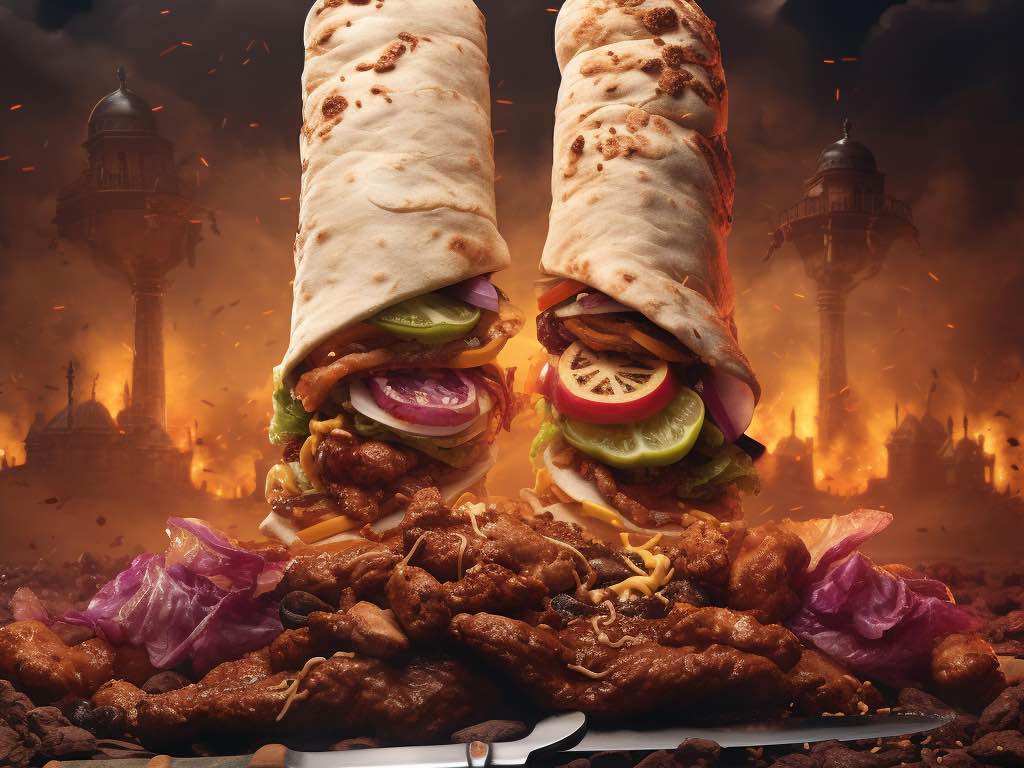
Kebab vs Shawarma: Exploring the Delicious Divide
|
|
Time to read 5 min
Welcome to One Stop Halal!
Written by: Najma A.
|
|
Time to read 5 min
In the world of mouthwatering, savory delights, few dishes can rival the appeal of kebabs and shawarmas. These two culinary classics have captured the hearts and taste buds of people around the globe. While they share similarities in their use of seasoned meats and cooking methods, distinct differences set them apart. In this gastronomic exploration, we'll delve into the origins, preparation, flavors, and cultural significance of kebab vs shawarma, helping you understand what makes these dishes unique and beloved.
Before we delve into the details of these delicious dishes, it's essential to understand their origins. Both kebabs and shawarmas have rich histories that span multiple countries, making them culinary treasures with diverse influences.
The word "kebab" traces its etymology to the Persian word "kabāb," meaning roast or grill. The history of kebabs can be traced back to the Middle East, where they were cooked over open flames or on skewers, possibly dating as far back as ancient Mesopotamia. This cooking method was later adopted by various cultures in the Middle East, Central Asia, and the Indian subcontinent. Over time, kebabs evolved to include multiple meats, seasonings, and preparation methods.
On the other hand, Shawarma has its roots in the Levant region, including modern-day countries like Lebanon, Syria, and Turkey. The word "shawarma" itself comes from the Turkish word "çevirme," which means "turning." The traditional method of cooking Shawarma involves stacking marinated slices of meat (usually beef, lamb, or chicken) on a vertical rotisserie. As the meat slowly cooks, it's shaved off in thin, succulent layers and typically served in a flatbread.
Kebabs and shawarmas may feature seasoned meats, but their preparation methods and specific ingredients differ significantly.
One of the critical distinctions between kebabs and shawarmas lies in the flavors and seasonings used in their preparation.
Both kebabs and shawarmas have deep cultural roots and play essential roles in the culinary traditions of their respective regions.
Kebab vs Shawarma have transcended their regional origins to become global sensations. Their popularity has led to adaptations and variations that cater to diverse tastes.
In various forms, kebabs can be found in many corners of the world. Greek souvlaki, Indian tandoori kebabs, and Persian koobideh are international adaptations. These variations incorporate local flavors and ingredients while maintaining the essence of the original kebab.
Shawarmas, too, have taken the world by storm. You can find shawarma shops in Europe, the Americas, and Asia, each offering a unique dish take. Some shawarma joints offer unusual twists, such as using different meats like veal, to cater to the preferences of local populations.
Welcome to your favorite Butcher Shop. We carry various meat cuts that are hard to find elsewhere. We deliver to your doorstep anywhere in the United States within 1-2 business days.
There needs to be a clear winner in the battle of kebab vs shawarma. These two culinary gems are unique and cherished in their own right, with distinct flavors, preparation methods, and cultural significance. The choice between kebabs and shawarmas often comes down to personal taste and the specific mood of the moment.
Kebabs dazzle with their bold, spiced flavors and the smoky essence of the grill. At the same time, shawarmas captivate with their simplicity, focusing on the natural taste of the meat and the exciting interplay of toppings and sauces.
The global popularity of both kebabs and shawarmas is a testament to their universal appeal. Whether you find yourself craving the hearty satisfaction of a kebab or the grab-and-go convenience of a shawarma, these dishes will surely delight your taste buds and leave you with a deep appreciation for the diverse world of culinary experiences. Ultimately, it's not about choosing one over the other but celebrating the variety and richness of global cuisine. So, why not enjoy them both?

© 2025 One Stop Halal, Inc.